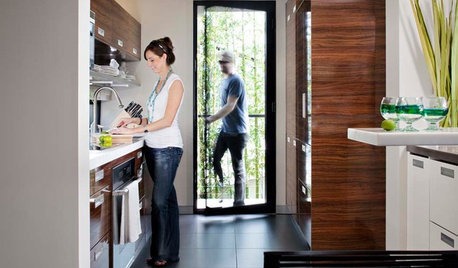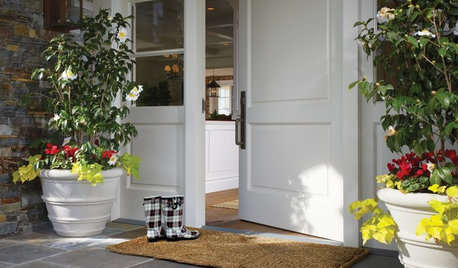Possible fungus gnat problem & question
DanaB_2109
12 years ago
Related Stories

GREEN BUILDINGHow to Start Finding a Greener House
On the hunt for a more ecofriendly house? Here are the questions to ask and research to do
Full Story
DECORATING GUIDESFrom Queasy Colors to Killer Tables: Your Worst Decorating Mistakes
Houzzers spill the beans about buying blunders, painting problems and DIY disasters
Full Story
HEALTHY HOMEWhat You Need to Know About Dust and How to Fight It
Breathe easier with these 10 tips for busting mites, dander and other microscopic undesirables
Full Story
WORKING WITH PROS6 Reasons to Hire a Home Design Professional
Doing a construction project without an architect, a designer or a design-build pro can be a missed opportunity
Full Story
MOST POPULARHow to Get Rid of Those Pesky Summer Fruit Flies
Learn what fruit flies are, how to prevent them and how to get rid of them in your home
Full Story
MOST POPULARThe Polite House: On ‘No Shoes’ Rules and Breaking Up With Contractors
Emily Post’s great-great-granddaughter gives us advice on no-shoes policies and how to graciously decline a contractor’s bid
Full Story
GARDENING AND LANDSCAPINGChoosing a Deck: Plastic or Wood?
Get the pros and cons of wood, plastic, composite and more decking materials, plus a basic price comparison
Full Story
GARDENING GUIDESGarden Myths to Debunk as You Dig This Fall and Rest Over Winter
Termites hate wood mulch, don’t amend soil for trees, avoid gravel in planters — and more nuggets of garden wisdom
Full Story
PLANTING IDEASGreat Garden Combo: Rose + Clematis for Small-Space Impact
We all need somebody to lean on. And when a rose supports a climbing vine, the results can totally transform a small garden
Full Story
GARDENING GUIDESCommon Myths That May Be Hurting Your Garden
Discover the truth about fertilizer, soil, staking and more to keep your plants healthy and happy
Full Story





DanaB_2109Original Author
jodik_gw
Related Professionals
Glen Ellyn Landscape Architects & Landscape Designers · North New Hyde Park Landscape Architects & Landscape Designers · Aurora Landscape Contractors · Wilmington Landscape Contractors · Bergenfield Landscape Contractors · Hendersonville Landscape Contractors · New Cassel Landscape Contractors · Quincy Landscape Contractors · San Bruno Landscape Contractors · Thornton Landscape Contractors · Watertown Landscape Contractors · West Coon Rapids Landscape Contractors · West Orange Landscape Contractors · Las Vegas Swimming Pool Builders · Valinda Swimming Pool Buildersdondeldux z6b South Shore Massachusetts
DanaB_2109Original Author
haweha
bronxfigs: New York City/7b
jodik_gw
hippeastrumadmirer
jodik_gw
DanaB_2109Original Author
jodik_gw